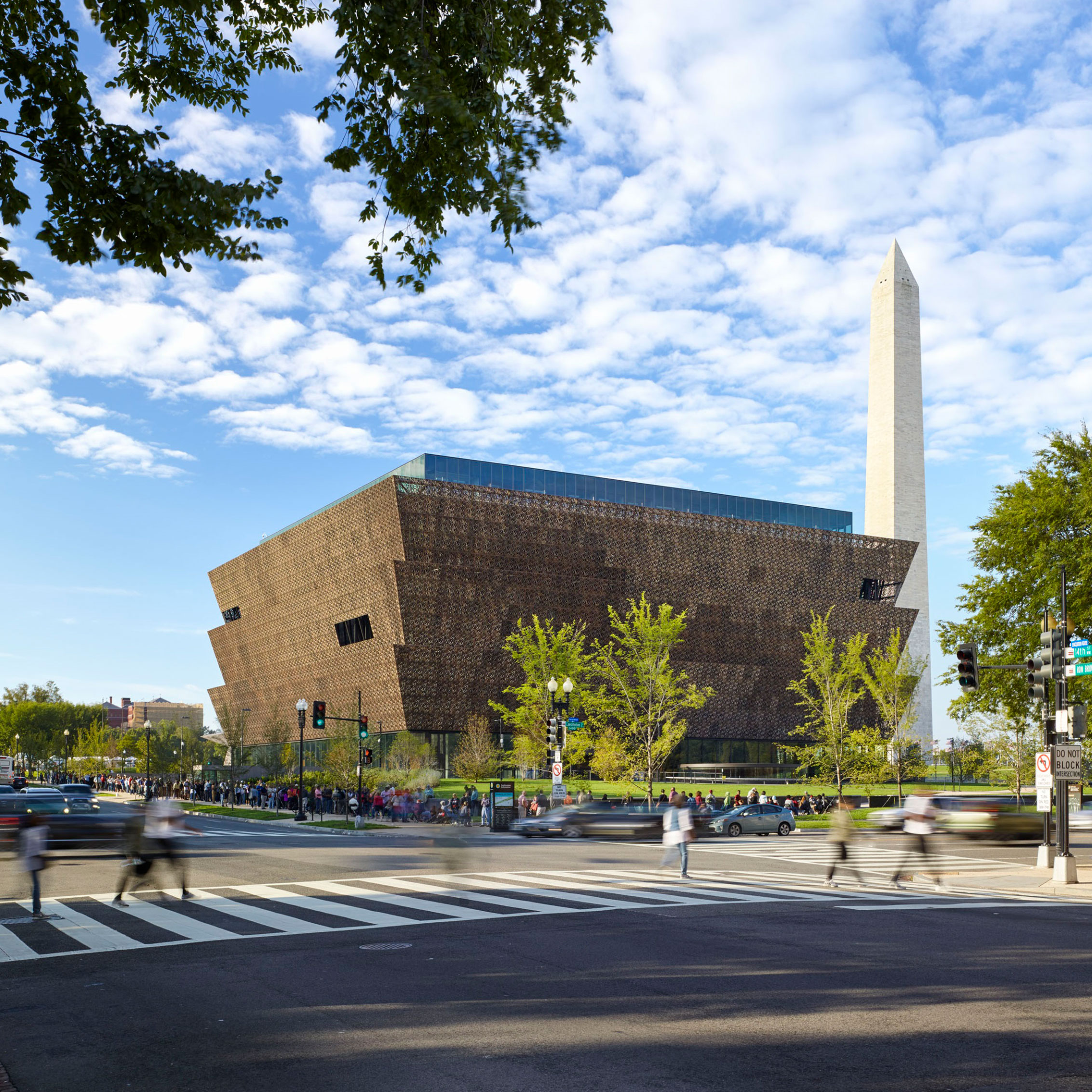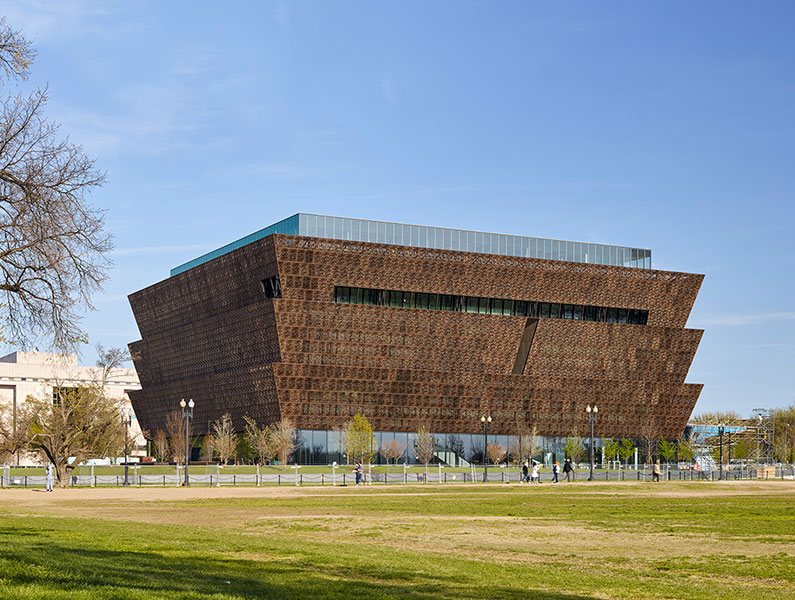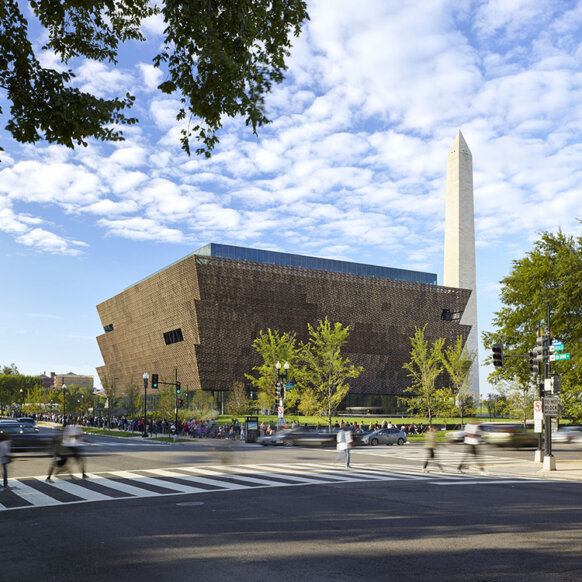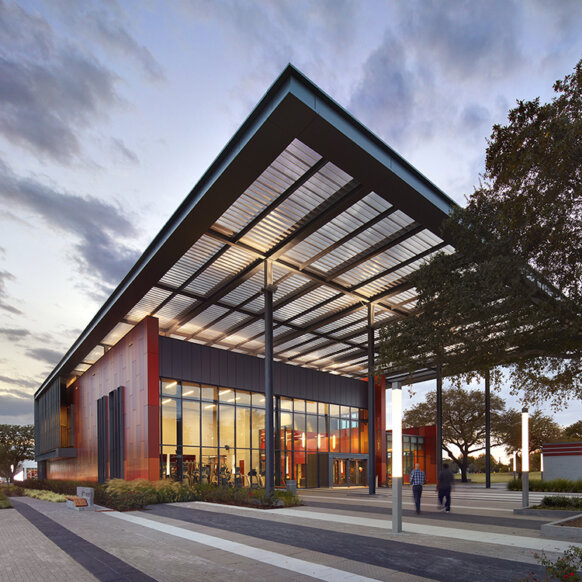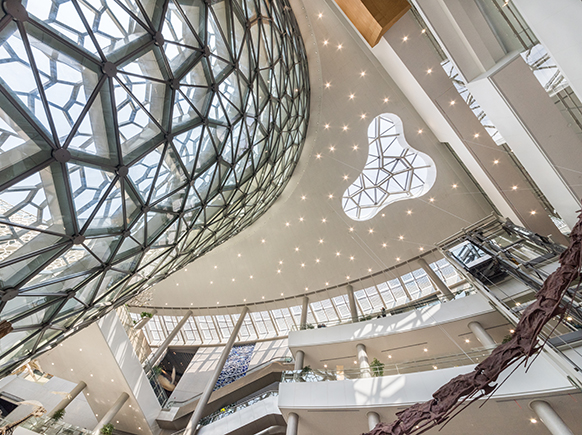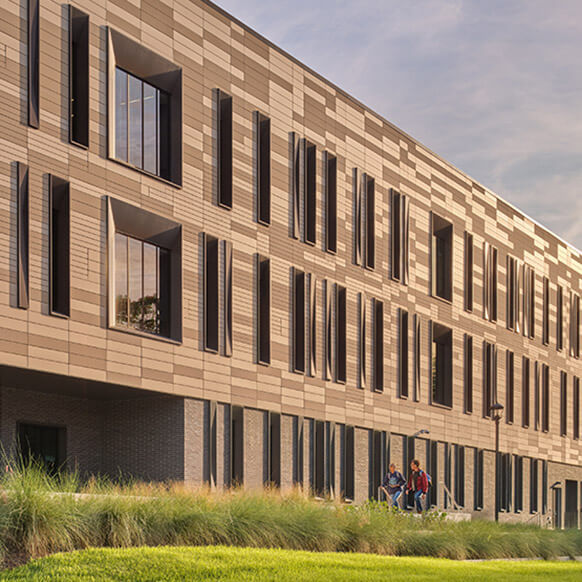Global architecture and design firm Perkins&Will celebrates today the grand opening of the National Museum of African American History and Culture (NMAAHC). The museum, designed by the collaboration known as Freelon Adjaye Bond / SmithGroup JJR – for which Perkins&Will’s Phil Freelon served as lead architect – honors the significant social, economic, and cultural contributions that African Americans have made to this country over the last several centuries.
“As an African American, and as the lead architect on this project, to know that this vision has become a reality on the National Mall, right in the heart of our nation’s capital and within steps of the Washington Monument, is to realize a magnificent accomplishment,” says Freelon, managing and design director for Perkins&Will’s North Carolina practice. “It’s difficult to find the right words to express my pride – not just in our contributions to the design of this museum, but also in all that the museum represents, and in all that the museum strives to do.”
Freelon has been actively involved in the creation of the museum since 2006. At that time, he began collaborating with the late Max Bond, another preeminent African American architect and a principal of the firm Davis Brody Bond, on the building’s initial planning. This collaboration resulted in a 1,200-page master planning and programming document that laid the groundwork for the museum’s design that we see today. In 2008, The Freelon Group and Davis Brody Bond invited Adjaye Associates and SmithGroup/JJR to join their team for the museum’s international design competition. The then newly-formed Freelon Adjaye Bond / SmithGroup JJR won the competition in 2009, and the site broke ground three years later.
Over the next seven years, The Freelon Group – which became part of Perkins&Will in 2014 – was responsible for leading the entire design team and the project’s 28 other consultants to ensure that the design intent and The Smithsonian’s vision for the museum became a reality.
“It’s been many long years in the making, and every moment of bringing this museum to life has been a true labor of love,” says Zena Howard, senior project manager on the NMAAHC and principal at Perkins&Will, who worked full-time on the project for more than 8 years. “As one woman out of the roughly 0.02 percent of female African American architects in this country, and the only black female architect on this project, I feel particularly honored to have had such an integral role in the museum’s creation. It means so much to me.”
The Building Design
The design and construction of the nearly 400,000-square-foot museum, which includes exhibition galleries, an education center, a theater, an auditorium, a cafeteria, a store, and offices, was one of the largest and most complex building projects in the country. With 60 percent of the structure underground, designers and engineers had to create a continuous retaining wall around the perimeter of the site – extending 65 feet down at its maximum height – to secure the building’s foundation in the marshland below Washington, D.C.
The museum is also the most sustainable national museum ever built, and the greenest of all Smithsonian Institution buildings. It features such design elements as rainwater harvesting, roof-mounted photovoltaic solar panels, extensive daylighting, and high efficiency mechanical systems. It is tracking LEED Gold certification.
The distinctive three-tiered building exterior is inspired by the Yoruban caryatid, a traditional West African wooden sculpture that bears a crown, or a corona, on top. The resulting upward-reaching form is both a contrasting and complementary presence among its neighboring structures on the National Mall. The pattern on the bronze-colored corona, made up of 3,600 cast-aluminum panels weighing a total of 230 tons, was inspired by the ornate ironwork of Charleston, South Carolina; Savannah, Georgia; and New Orleans, Louisiana – much of which was created by enslaved and free African Americans. The visual impact of the corona changes over the course of the day and even the year, appearing quiet and somber at times, but bright and vibrant when exposed to sunlight.
The building’s main entrance features a sweeping front porch with a reflecting pool, welcoming all who approach it from the National Mall. Visitors pass through the Heritage Hall prior to entering the History Gallery on the lowest level. Ascending via ramps through exhibits highlighting slavery and freedom, the story culminates at the “1968 and Beyond” exhibit. The Contemplative Court, where a cylindrical waterfall, coupled with daylight shining down from the oculus above, sets the tone for reflection and remembrance.
The Oprah Winfrey Theater, located opposite the Contemplative Court, seats 350 people. This venue is a forum for performers, artists, educators, scholars, authors, musicians, filmmakers, and opinion leaders to showcase how African American history and culture shapes and enriches the country and the world.
The exhibits focused on culture and community, music, and the visual arts are located on the floors above grade.
“Everything about the design of this museum was purposeful with the hope that visitors would see America from a different perspective, through the lens of the African American experience,” Freelon says. “With all of the social ills afflicting our nation today – and we are living through some very challenging times – it is my hope that the people who come here will leave positively changed, with an open mind, heart, and willingness to come together to find solutions.”
